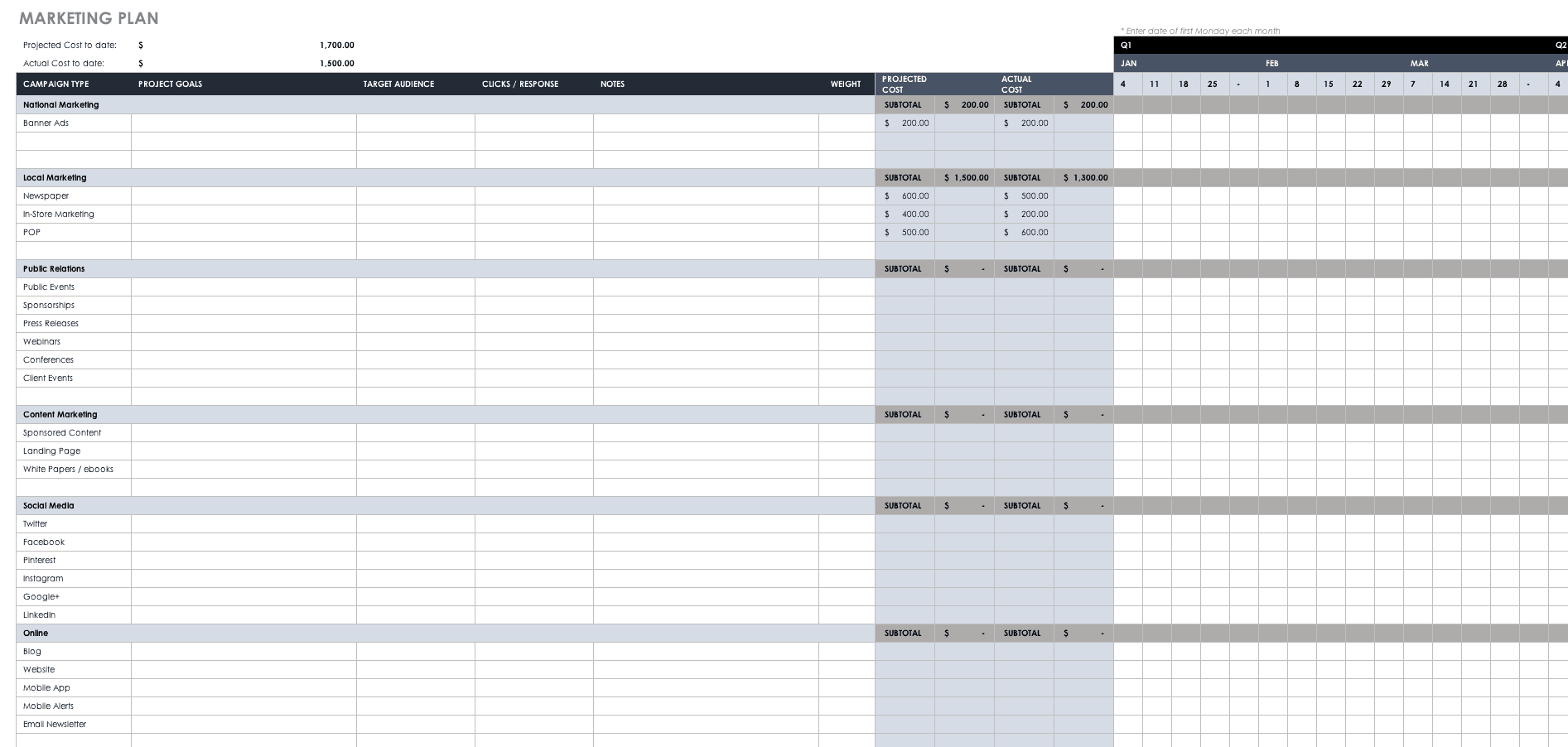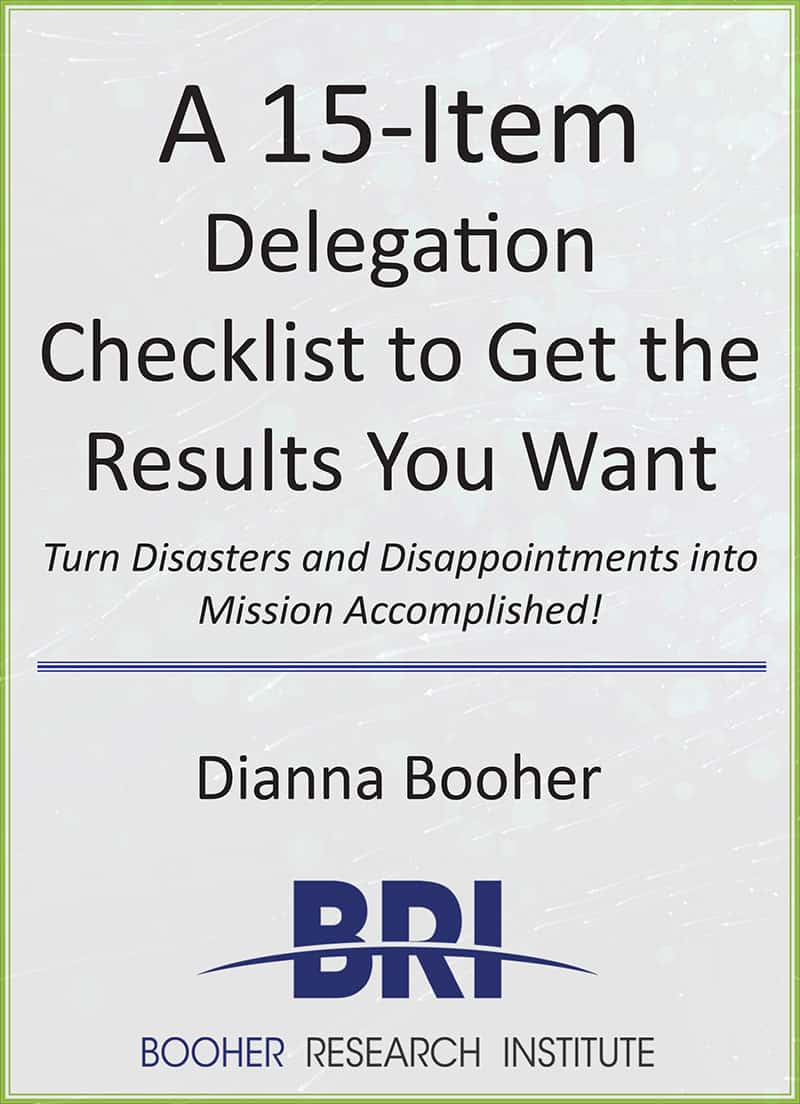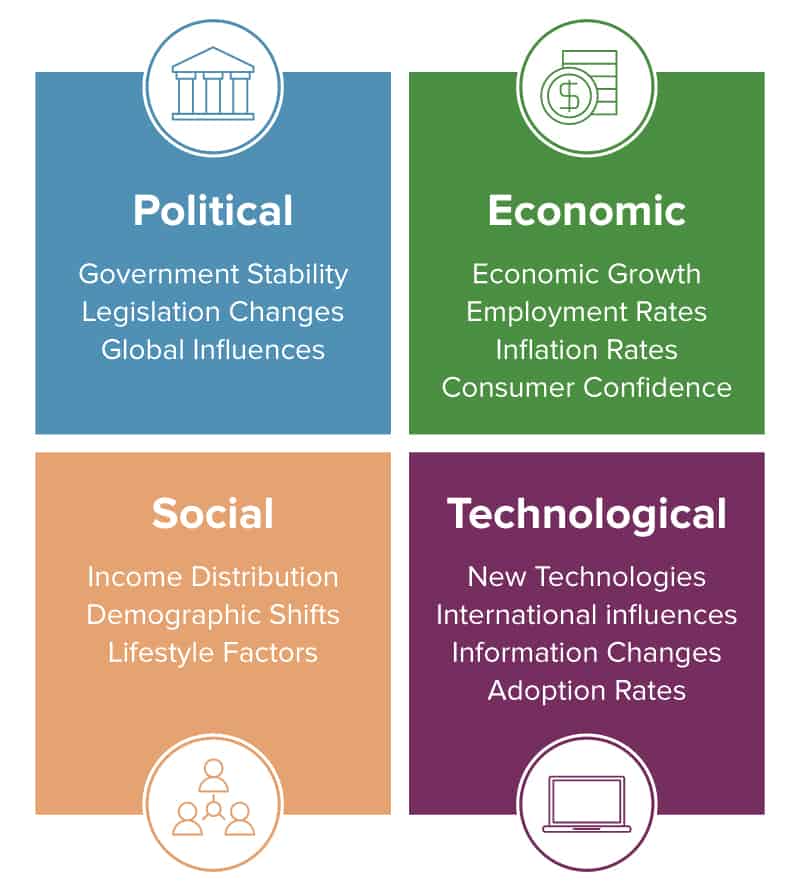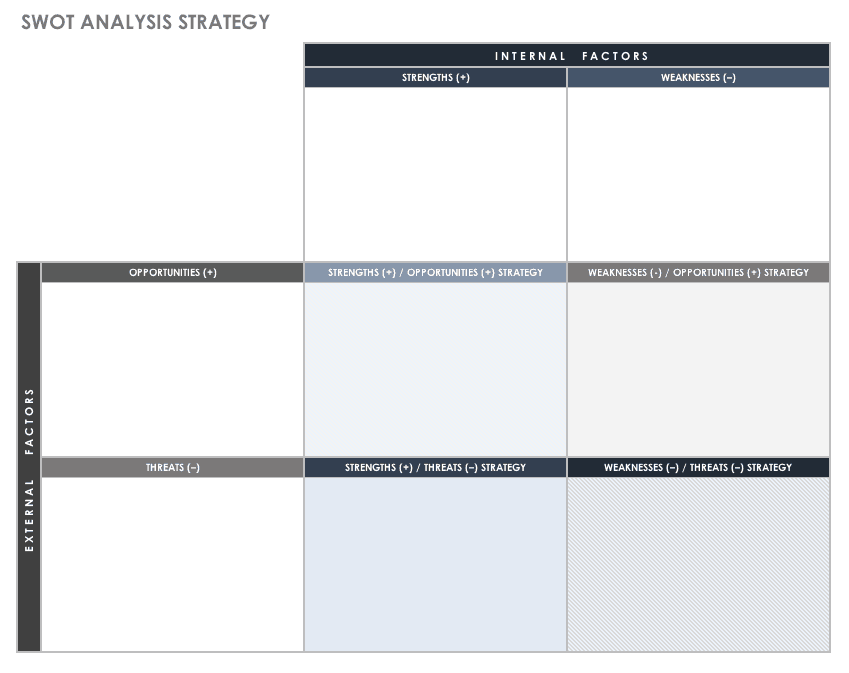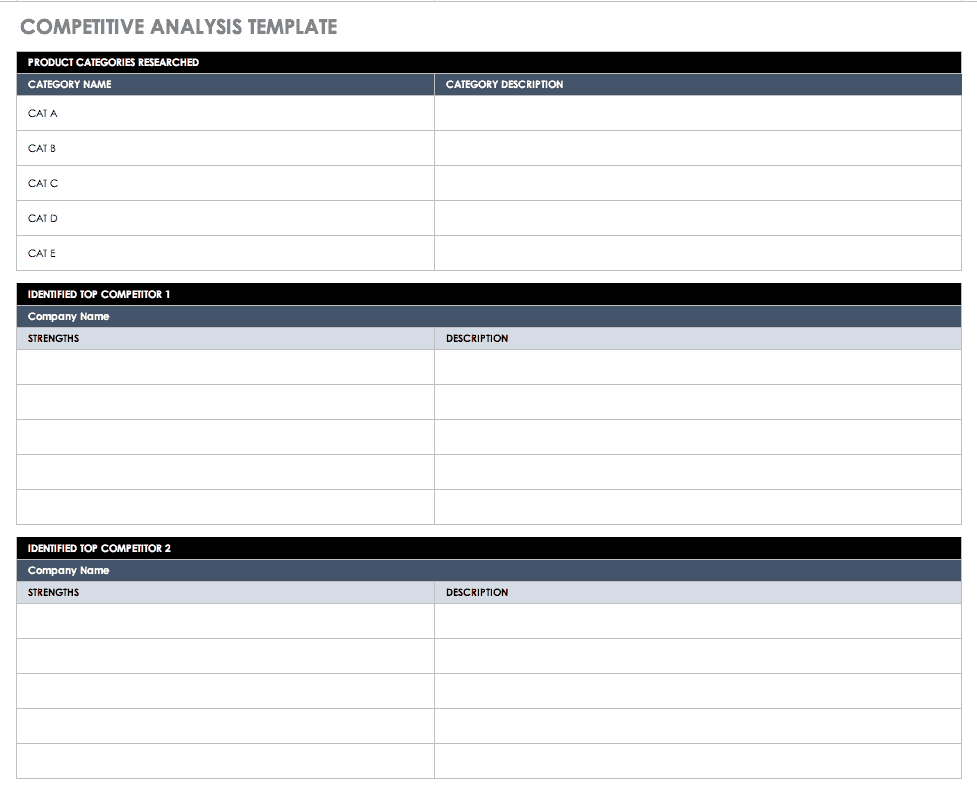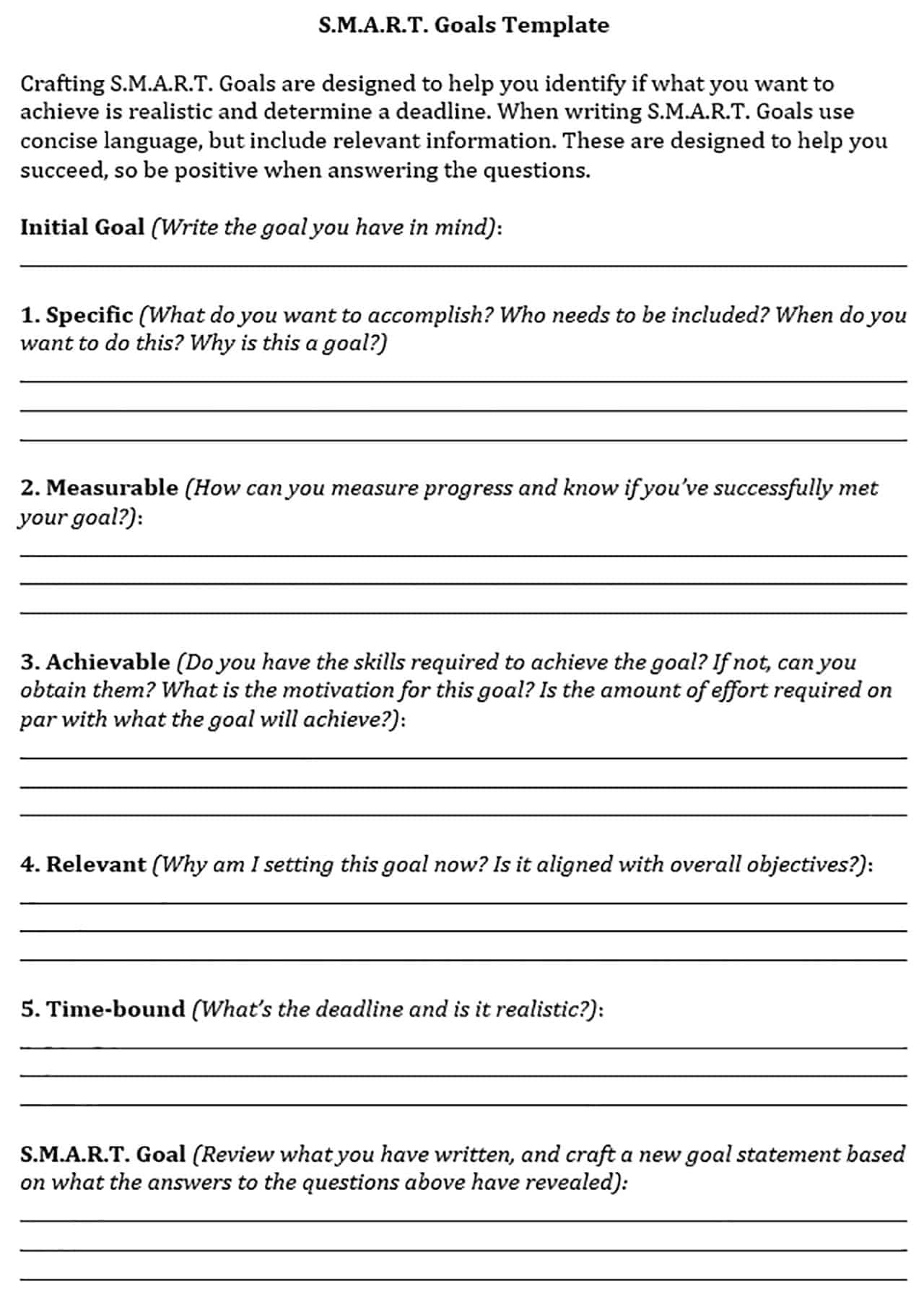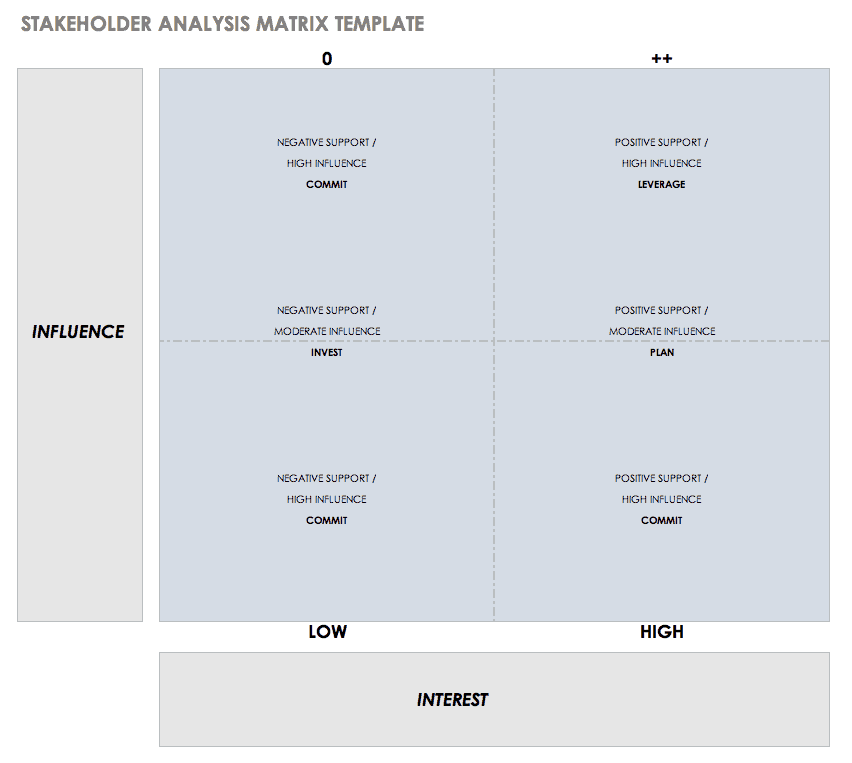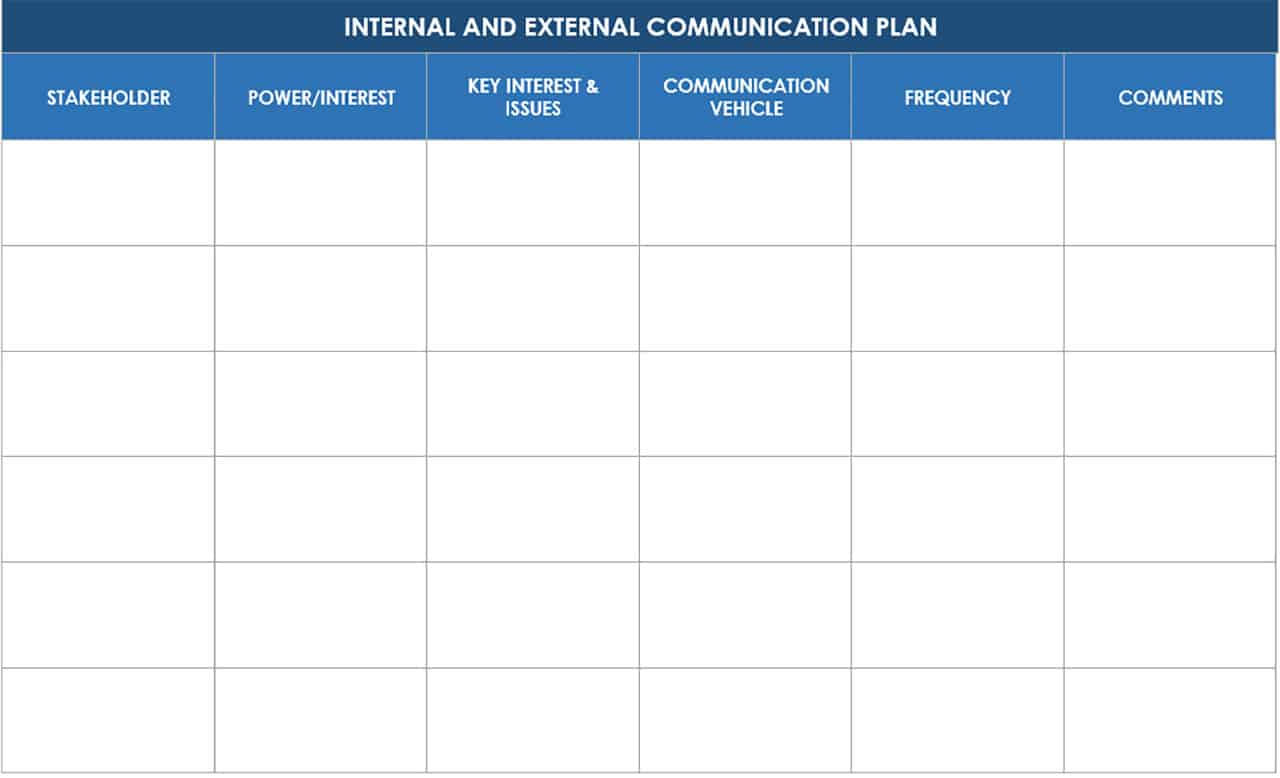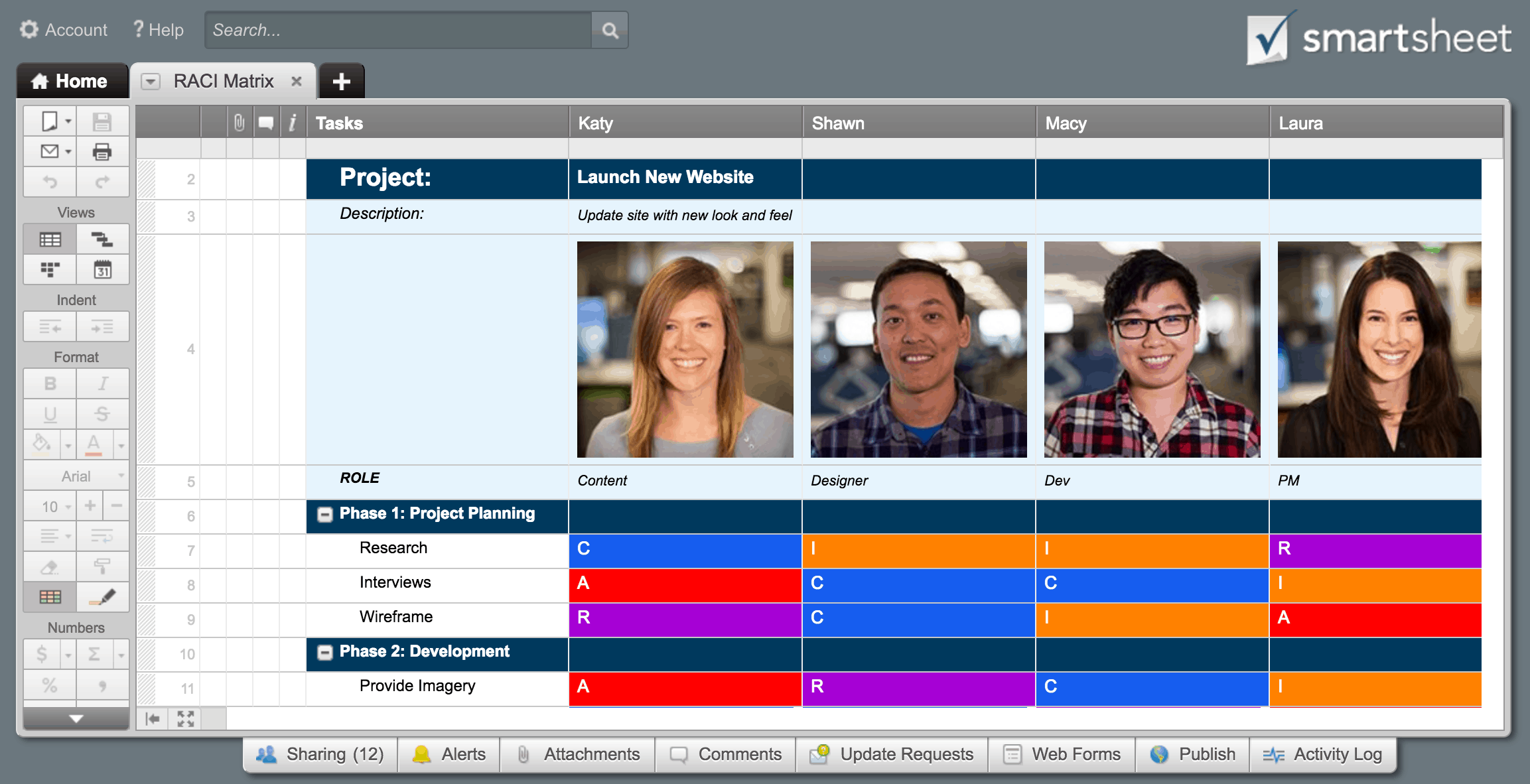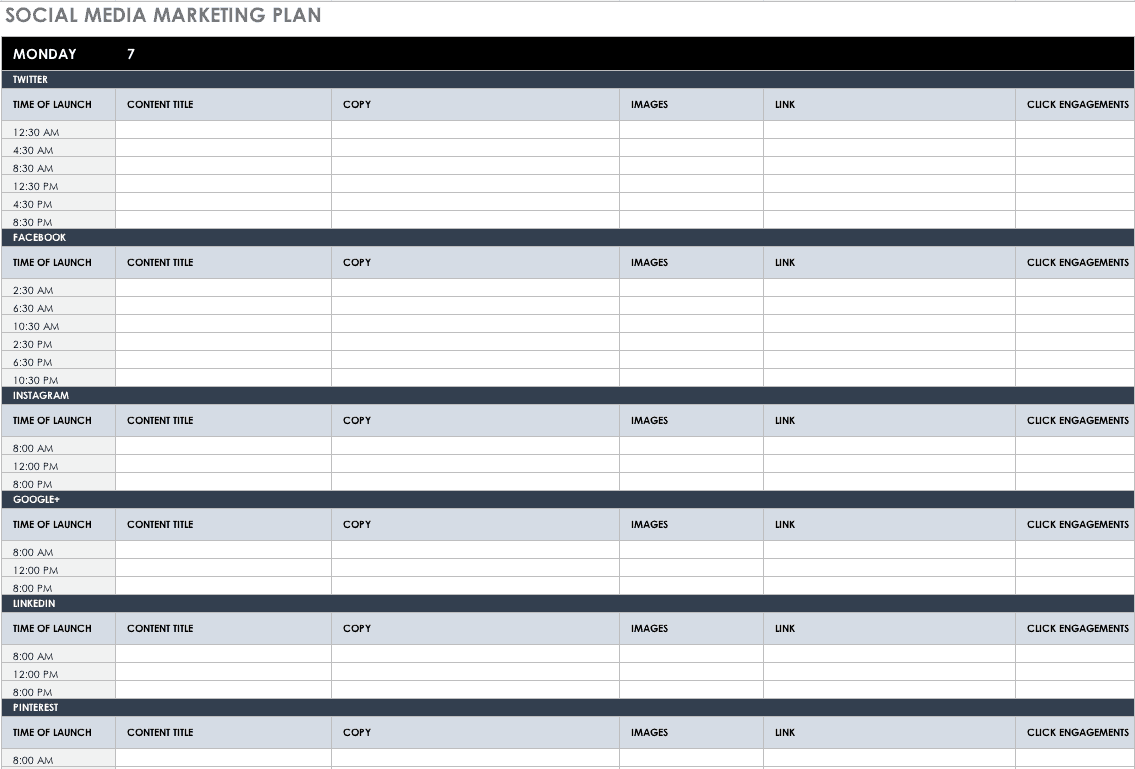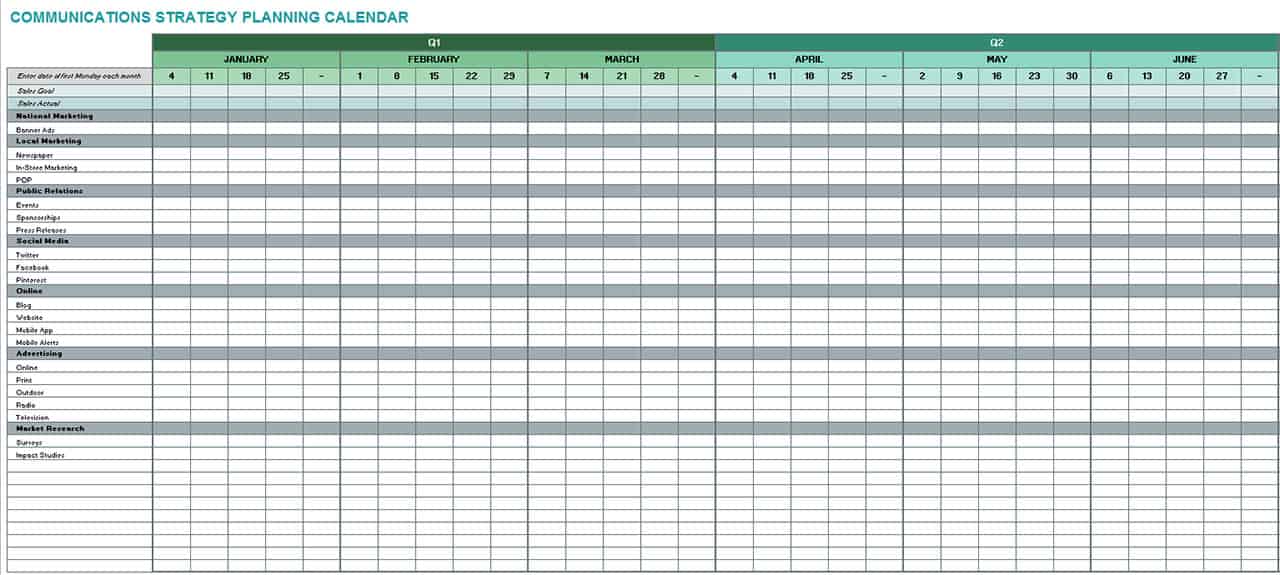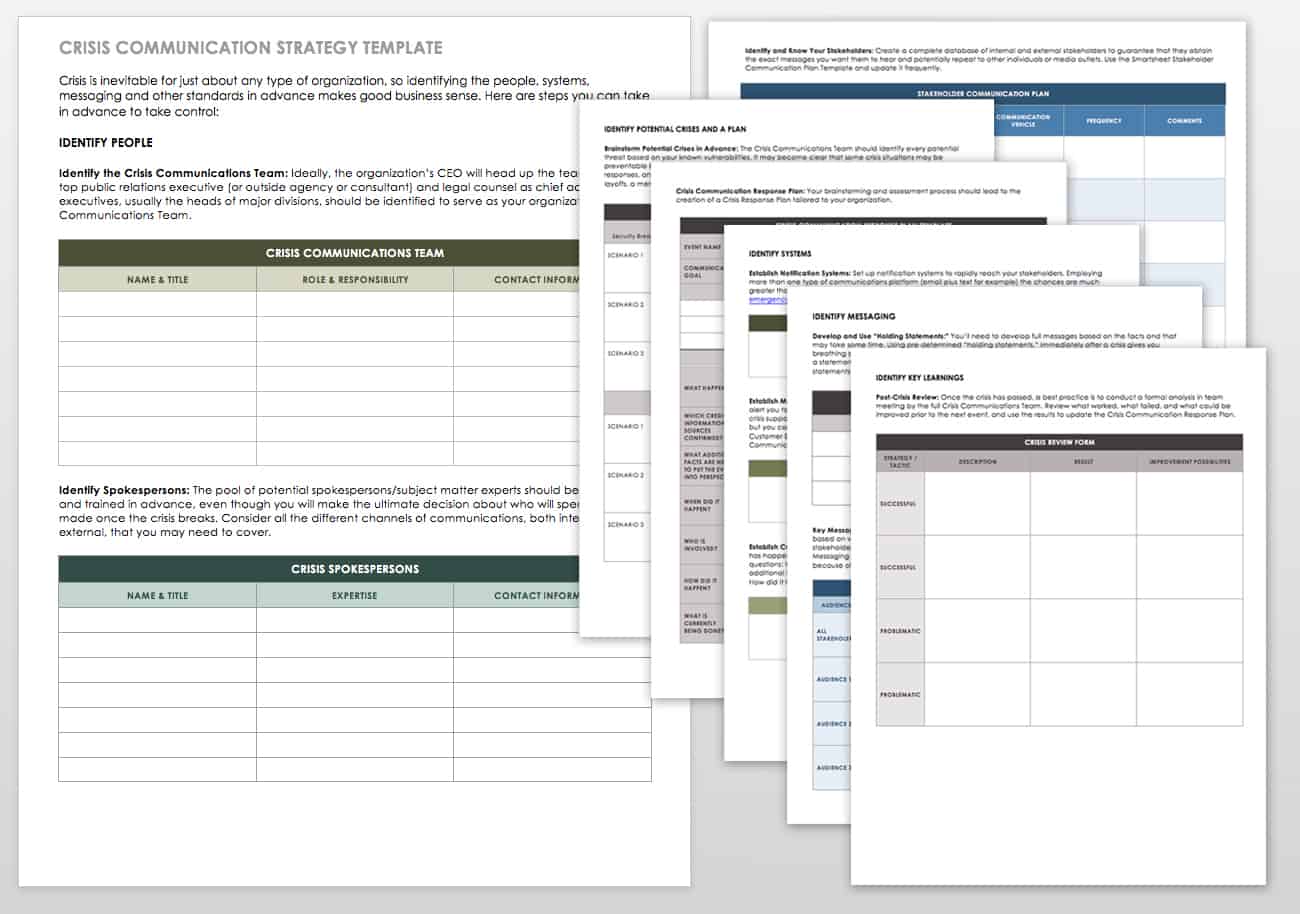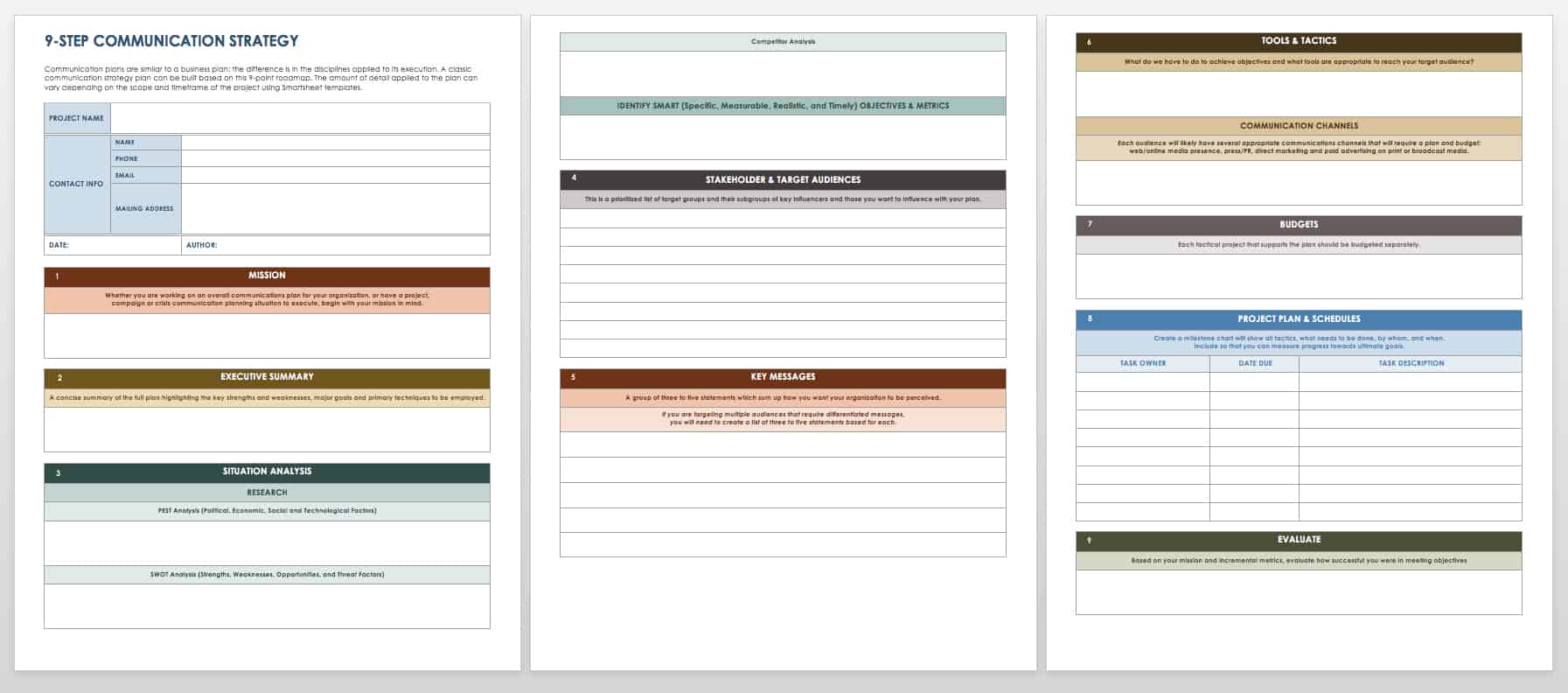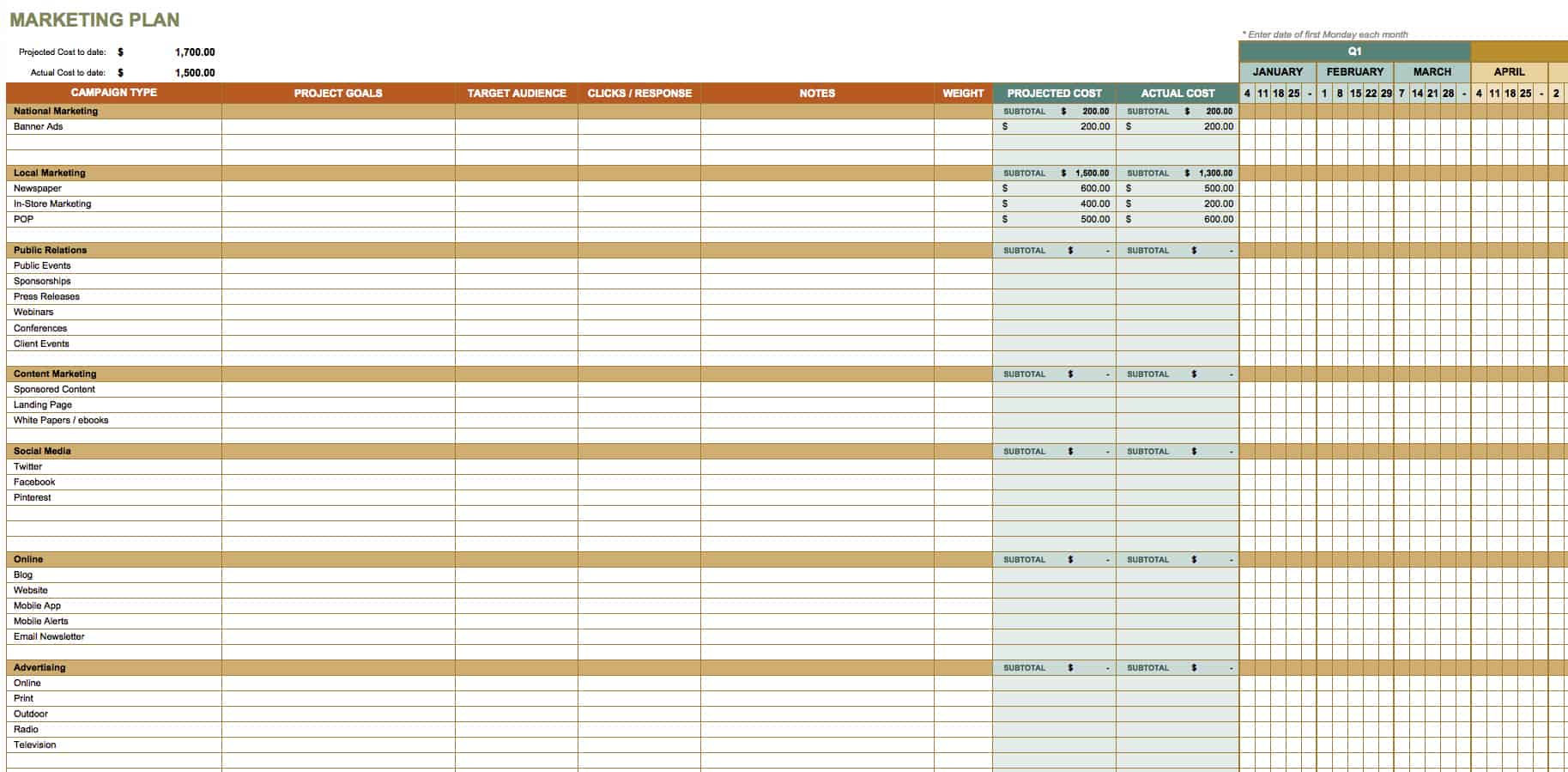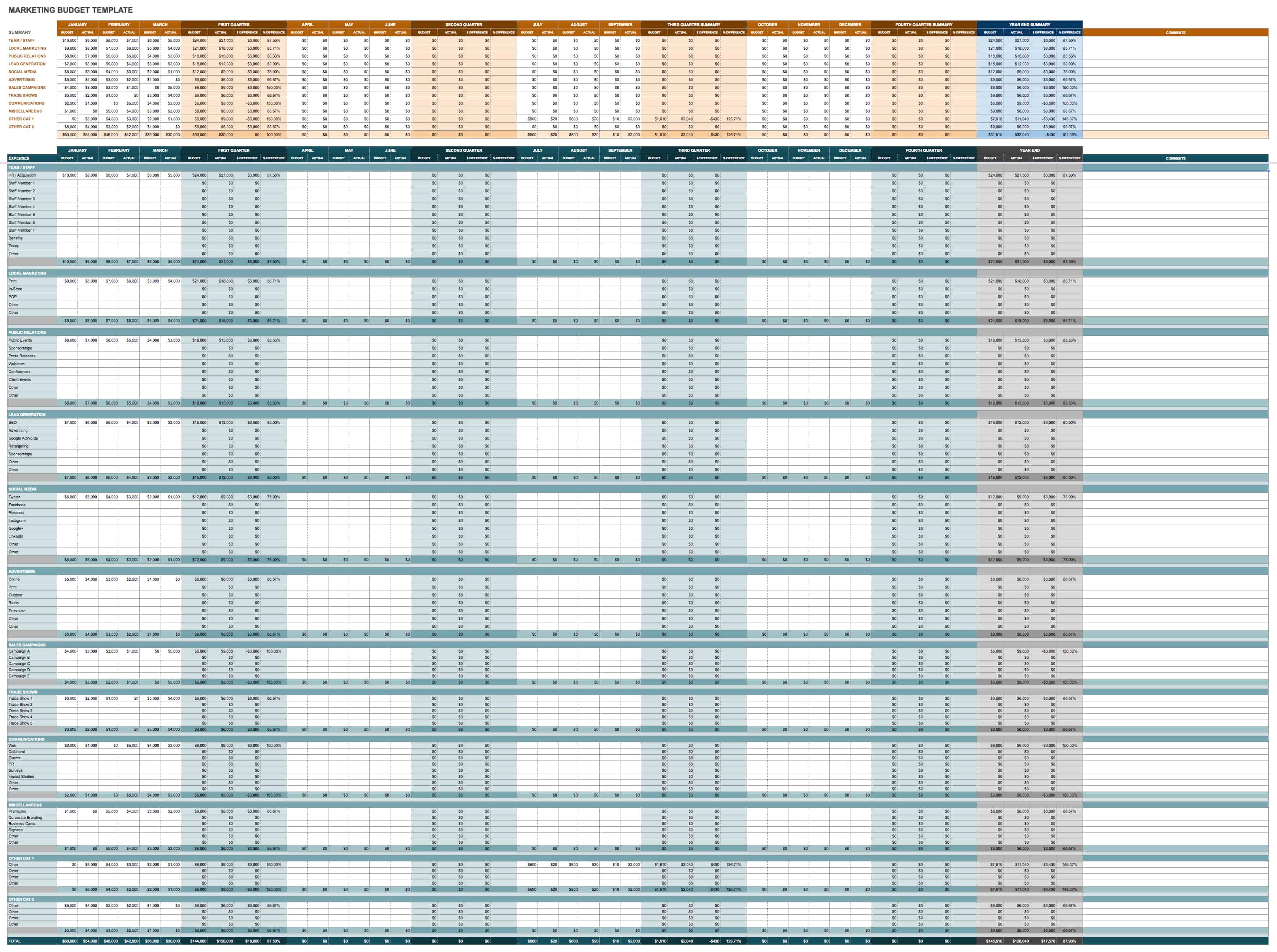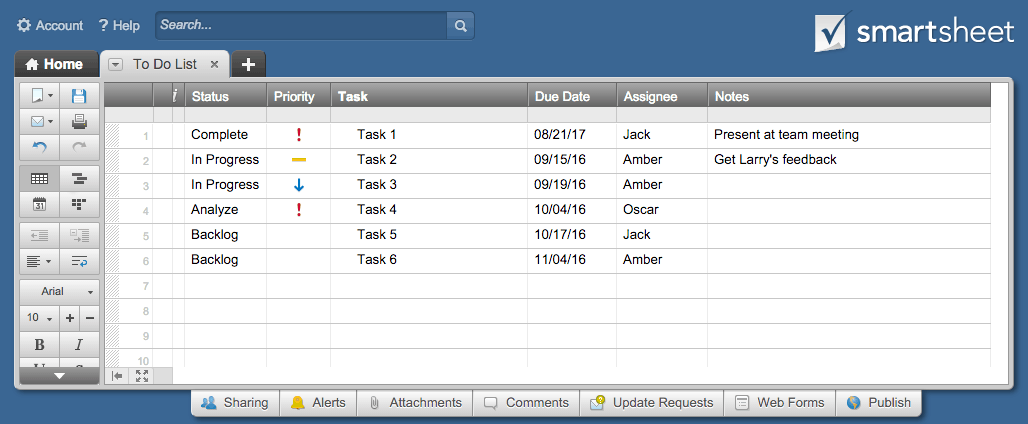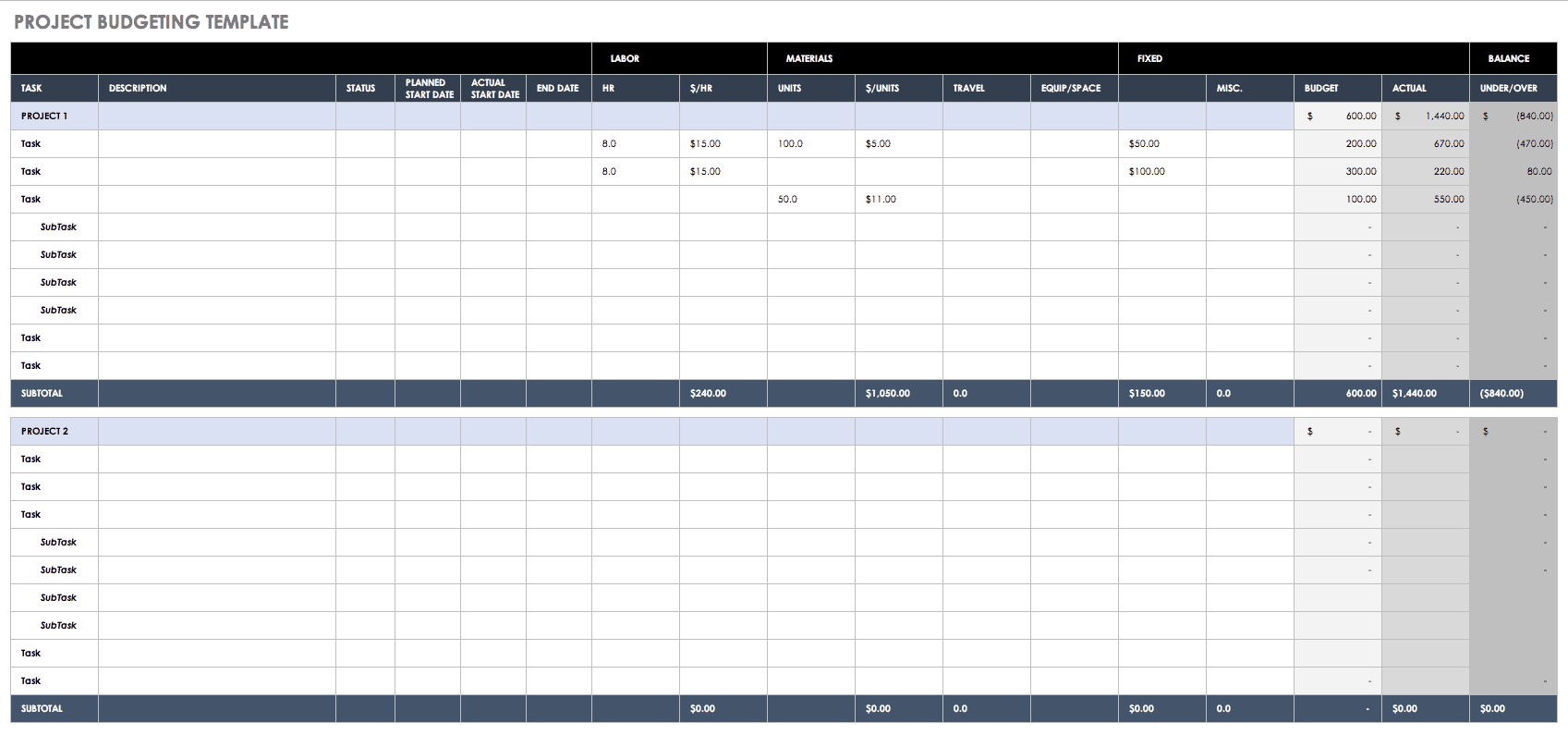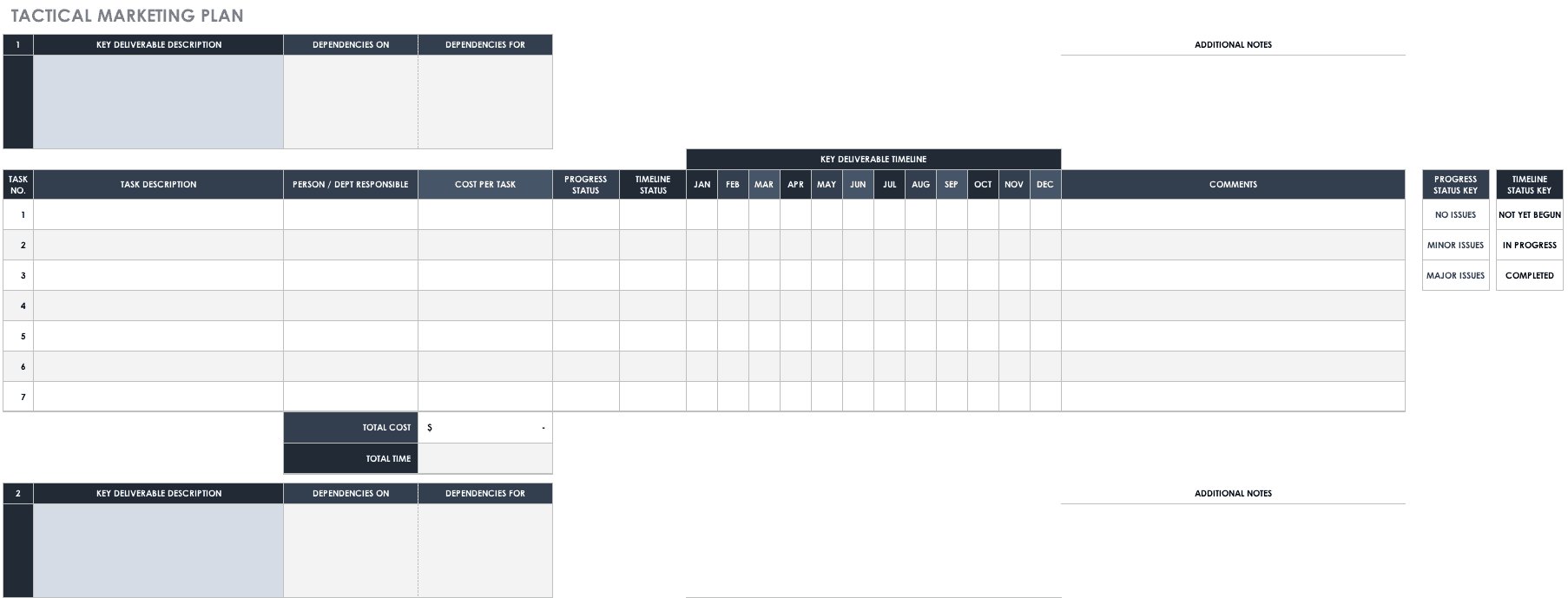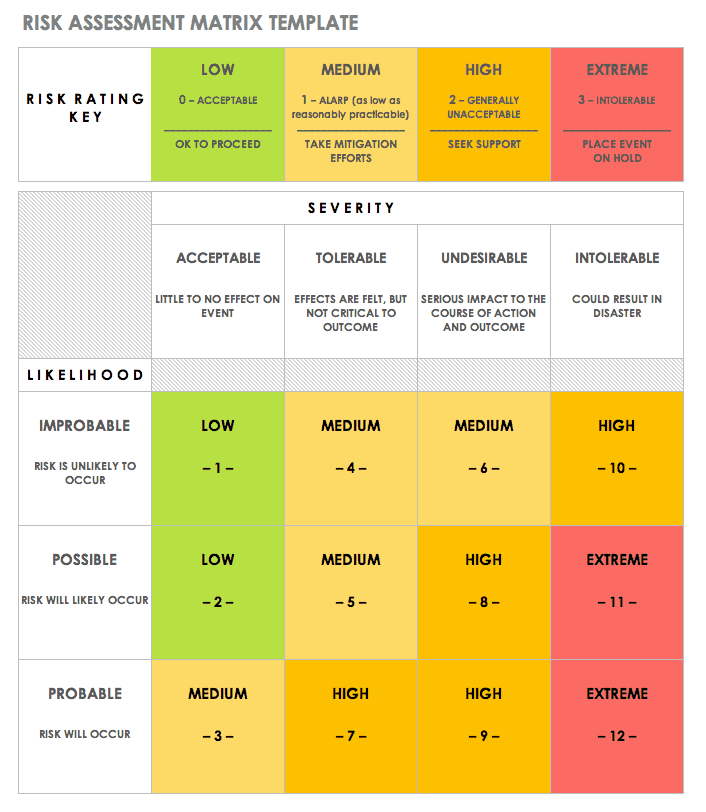What Is Communications Strategy and Planning?
A communications strategy clearly identifies the objectives and processes of your organization's outreach activities. It covers what the organization needs to share and whom to share with to meet goals. Formalized as a written plan, it’s an important part of daily operations. It frames media activities, including both external and internal communications, defines priorities, time frames, target audiences, staff assignments, and resources.
Developing a communications strategy is a complex undertaking with lots of moving parts. PR pros like John Raffetto and Dianna Booher understand best practices and exactly what goes into creating and executing an effective communications strategy.
We asked Raffetto how he begins his planning process. “At RH Strategic we begin all strategic planning with the question, ‘Where do you see your company in five years?’ This reveals the highest level objectives and helps us layer in a communications plan that is 100 percent aligned with where the leadership is taking the company,” says Raffetto. “We then develop three or four communications plan objectives, and then we align every tactic -- whether it is a speaker placement, an event, a media campaign or an influencer engagement initiative -- with one or more of these objectives.”
Meanwhile, Booher has an eight-step process she uses to develop a communications strategy plan for a client, company, or specific event:
Step 1: Interview all the primary stakeholders to get their perspective on the problem and the goal.
Step 2: Analyze the data to see where there’s agreement.
Step 3: Decide if it’s necessary to collect more data to further investigate the misalignment.
Step 4: Interview other stakeholders (second-tier people) to understand how they see the problem and the goal.
Step 5: Reconfirm the goal with the primary stakeholders.
Step 6: Design an implementation plan, along with measurements of success.
Step 7: Execute the plan.
Step 8: Measure success
Types of Communications Strategy Plans
There’s no single way to create a plan since, as Raffetto notes, you must customize it to your organization, goals, environment and situation, and there are different types of communications strategy plan.
Booher concurs, and says, “Every situation differs. So I don’t routinely use any particular template all the time. But I do have templates that I use when I identify similar problems.”
Here are three general types of plans that any non- or for-profit organization may create to meet either long-term or short-term goals:
- Overall Communication Strategy for Organization: A communication strategy is both subservient and complementary to the overall marketing strategy, which takes its direction from the organization’s overall business strategy. The business strategy is general and pinpoints the desired bottom-line financial outcome. The marketing strategy supports those goals with strategies that incite target audiences to take what you’ve determined to be the desired action, whether it’s buying a product or service, making a donation if you’re a non-profit, or signing up for an online class if you’re a web-based university. The marketing strategy assembles all the other strategies, one of which is communications. The organization’s communication strategy plan is in fact more closely tied to tactics, as we’ll see as we move through the steps to creating your plan.
If you haven’t completed a marketing communication strategy, you’ll need to do that before you begin your communication strategy plan. This free annual marketing plan template can help you get started. Simply download the template and you can adjust it to reflect the necessary components of your individual marketing plan. It includes campaign type, project goals, target audience, response rates broken down into sections for national and local efforts, content marketing, online marketing, media relations, public relations, trade shows and events, sales campaigns, and branding efforts. Objectives are clearly identified along with total costs and target markets. At the top of the template, you can define monthly sales goals and at the lower section of the template you’ll find a place to record marketing effectiveness metrics.
Download Marketing Plan Template
- Event or Product/Service Launch Communications Strategy: In addition to the overarching organizational communication plan, there is often a need to create ‘sub plans’ that support time-constrained events like product or service launches or a fundraiser. Event specific communications should still tie into the overall communication, marketing, and business strategies. Plan components (targets, budgets, and messaging) are the same as your overall plan, and you can use the same templates to work on the details.
Booher adds, “If delegating responsibilities is a problem, I use this 15-item delegation checklist to help the manager handle the what, why, when, and how productively.
Download the 15-Item Delegation Checklist by Dianna Booher
- Crisis Communication Strategy: Another situation that requires a time-constrained strategy and plan is crisis communications, which deals with unexpected or disruptive events that threatens the organization, stakeholders, or sometimes even proposes harm to the general public. Usually, these events garner negative media attention that you’ll want to preempt or have a response plan for. A business must be able to respond promptly, accurately, and confidently during an emergency. While you can’t anticipate a particular crisis, you can have a structure and process in place, and then quickly ‘fill in the blanks’ in a written document when it’s necessary. Examples are theft, legal disputes, or manmade disasters blamed on your organization. Conversely, your company could also deal with the repercussions of not reacting to these types of situations in the appropriate manner. You’ll find more information on crisis communication and templates to help manage these situations later in this article.
What Problems that Communications Strategy Plans Solve
There are multiple benefits to having a formal, written communications strategy plan for any organization (government agencies, consumer brands, charities, and universities) and the teams within it. Here are some:
- Form Consensus: Getting involved in the process and integrating participants’ opinions brings a sense of ownership. A written plan means that everyone is following the same playbook and working toward a clear, common goal.
- Realistic Timelines: Planning in advance and creating work-back schedules helps organize how to execute individual tactics and the overall plan.
- Identify Needed Resources: With timelines in place, it is easier to identify if you need to add outside help to the team, if you need to reassign existing team members, and how to budget based on the strategy.
- Assign Responsibilities: A plan will help manage people understand their contributions to the company and their responsibilities
- Channel Planning: There are many different ways to spread your message. Identifying which channels to use for what type of communication will help you focus your attention so that you aren’t continuously pulled in different directions.
- Identify Risks: Having team reviews at set intervals will help you determine what’s working and what needs to change, and will strengthen your strategy and plan.
- Success Metrics: Goals should be part of your strategy and serve as guideposts for plan evaluation and to highlight areas that should be improved in both current and future efforts.
The Benefits of a Communications Strategy in Action: Three Case Studies
How do strategic communication plans work in practical reality? Raffetto provides a client case study:
RH Strategic has a client that has developed a game-like technology to help kids learn math. It’s incredibly powerful in that it ‘learns the learner’ and personalizes lessons to each student’s learning style. As a result, it closes the gap in math achievement. Teachers and students love it, but not everyone in education is aware of it or understands the opportunities it offers.
RH Strategic was retained to build a PR strategy to change that. We spent a full day with various executives and a whiteboard to map out the company’s future and to develop top communications objectives.The top two were to grow brand awareness among school district buyers and selection in the market, and to leverage top executive’s thought leadership to change conventional thinking in the market. Knowing this, we then built a plan that mixed intense, month-to-month media outreach and media coverage with speaker placements and social media tie-ins to drive toward both objectives.
Most recently, the CEO was featured in the New York Times Corner Office column as a thought leader – an article that not only reached millions directly, but was also shared repeatedly on social media and spawned many other media and speaking requests. In parallel, our team was also busy promoting the brand and the product to the education trade press and local media. As part of our original communications strategy, we developed a customer award program that drove a tremendous amount of local press coverage for the brand, which tended to get neighboring school districts’ attention and motivated them to investigate whether they should be customers as well. Prior to this effort the company got very little visibility in the local press.
Each quarter we took a snapshot of the progress and were pleased to discover that the quantity and quality of results tied to each strategic objective expanded dramatically from one quarter to the next. That is a classic case of ‘success breeds success’ and demonstrates how a strategic communications program can take a company’s visibility to the next level.
Booher provided a case study that exemplifies how to strategize a communications plan to change the perception of internal stakeholders:
An executive vice president of a large utility company called me with this problem: “I’m concerned that the organization may be considering outsourcing the work that my division of about 2,000 employees now does. They continue to cut our budget and have capped headcount. Yet we provide essential services — IT, records management, HR functions. I feel as though I’m always on the defense to justify our existence.”
Rather than justifying budget and headcount, I suggested a strategy of education. The VP and his three direct reports admitted that the typical employee in the 50,000+ organization did not even know what function the ‘Administration’ division played.
So why would they possibly fight to keep these services internal rather than outsourced? Answer: They wouldn’t.
Consequently, all the senior executives agreed on a strategy to educate the entire employee population about what back-office services the division actually provided to garner support to keep these services inhouse.
The tactical plan followed. A five-page communication plan containing a bulleted list of action items to implement the strategy. For example:
- Modify the email signature blocks to add an educational tagline.
- Train department representatives to take on a customer service attitude toward internal customers they serve.
- Have system analysts send follow-up emails after providing IT services, for example, to make sure a newly installed software package is running smoothly.
- Ensure that the Records Storage department regularly sends out a reminder of the archiving schedule.
Result: The “Administration” division became visible to the entire organization, and 2,000 people kept their jobs.
In an altogether different situation, Booher developed another plan for her client to improve internal and external communication:
The goal was to improve communication flow across department lines and to improve communication with clients. Here’s how I handled it in brief:
The strategy:
Identify the roadblocks and improve the written communication (since almost all communication was in writing).
The tactical:
- Review their templates to see what they were using.
- Review sample correspondence.
- Interview department managers to get their perspective on the problem.
- Train their group of writers whose main role it was to communicate with customers.
- Rewrite/improve all their boilerplate documents so that they are starting with appropriate models.
- Change the physical layout of the office so that they have verbal interaction on a daily basis.
- Coach their senior executive on using more up-to-date methods of approvals/signatures and eliminating antiquated phrasing in his own correspondence.
A Step-by-Step Guide to Building a Strategic Communications Plan
Like a well-built engine, a strategic communications plan has many specifically engineered parts to accomplish your goal. While every communications plan should be thoroughly customized, there are common, time-tested components that go into a high-performance plan.
RH Strategic uses proprietary templates to track communications strategy. “The RH Strategic team has developed its own templates over the years,” says Raffetto. They all include research and discovery where we assess the client’s market landscape and their strategic objectives; various programs to achieve those objectives; and measurement initiatives so that all parties can assess at any time the progress of the strategy and make adjustments. It’s a pretty simple and logical template, and it’s designed to be useful not just to the communications team but the entire executive suite and even the boardroom.”
Next, you’ll find descriptions of all the component pieces and templates you can use to develop your own plan.
Begin With Your Mission Statement
The mission statement defines the reason your organization exists and serves as a framework to evaluate current and prospective activities. Include your mission statement at the very beginning of the communications plan to show that the initiative doesn’t just come from the communications department or consultant. Your mission statement should also inform your key messages, which should be brief, non-jargony benefit statements.
Here’s an example of messaging that comes directly from defining a mission. Highfive, a video conferencing company, has a brief mission statement: Our mission is to make every conversation face-to-face. Their three key value-driven messages are:
- Highfive is beautifully simple video conferencing that you can initiate or join with a single click
- Twenty conference rooms for the price of one Cisco or Polycom system
- Built for businesses, not social networking
The messages support the mission statement, clearly states the benefits, and the copy is easy to use in all types of formats. Before you begin creating your own messages, there are other steps to take, beginning with research.
Do Your Research
To develop an effective strategy, you need to take a deep dive into understanding your operating environment, strengths and weaknesses, competitors, audiences, and how to message based on goals. An important element to explore is what communication platforms and channels you’ll use to spread your message, and finally the metrics you’ll use to ensure the effectiveness of your efforts. Here are some types of analysis you can perform to help you identify how to move forward:
PEST Analysis: PEST (Political, Economic, Social, Technological) analysis is the first step an organization can use to begin their overall business planning. It’s a tool to help you understand your business position, and market growth or decline, and scan your environment. By understanding these factors, you can determine overall opportunities and threats to your organization.
Once you’ve completed your PEST analysis, you can move on to look at your direct competitors in the marketplace.
SWOT Analysis
SWOT (Strengths, Weaknesses, Opportunities, and Threats) is an analysis framework that identifies and examines the internal and external environmental factors that can impact project, product, place, or person viability. Originally developed for Fortune 500 companies, organizations of all kinds have embraced SWOT as a decision-making aid. SWOT analyzes four areas:
- Strengths: Internal attributes and resources that provide advantages.
- Weaknesses: Internal attributes and resources that are a disadvantage to the organization when compared to others.
- Opportunities: External factors that a company can exploit to gain an advantage.
- Threats: External factors that could result in jeopardy.
This environmental scan is a means to help decision makers ascertain if the project or goal is worthwhile and what’s needed to make it successful. The next step is to match resources to meet the identified challenges and opportunities. Below you’ll find some templates you can download to help with your research.
SWOT Analysis Strategy Template for Excel
Use this template to examine the relationships between external and internal drivers, and determine what strategies you can employ to address different threats, strengths, weaknesses, and opportunities. You can find more SWOT templates here in a variety of formats.
Download the SWOT Analysis Strategy Template
Competitor Analysis Template for Excel
Use this template to perform a competitive evaluation of your organization and to inform your communication strategy based on product categories. A detailed multi-layered template for each product category will help you analyze major attributes and channels, pricing, credibility, promotional offers, and relevant research findings. It also enables the identification of opportunities and potential partners.
Download Competitive Analysis Template
Create S.M.A.R.T. Objective(s)
To provide structure, guidance, and to better identify what you want to accomplish for your communication strategy plan, S.M.A.R.T. goals are especially effective. They are:
- Specific: A mission statement for your goal that clarifies what you want to accomplish
- Measurable: Think about meaningful metrics that will create a tangible way to measure progress
- Achievable: You and your team agree on what’s attainable
- Relevant: Focus on what makes sense within broader business goals and realistic resources
- Time Bound:Target timing, along with interim schedules, for deliverables
To learn more, read The Essential Guide to Writing Smart Goals. You can also use the following template to get started writing your S.M.A.R.T goals.
S.M.A.R.T. Goals Template
This template helps clarify the five classic S.M.A.R.T. steps for your communications strategy or any other project. Once you complete the questionnaire, the answers will help fine-tune your strategy into attainable goals. You can use it as a tool for the whole team to make sure your goals are realistic, and to form consensus before moving on to the next steps in your strategic communication planning process.
Identify Audiences and Influencers
Knowing who influences you and who you influence will clarify the impact of the actions you take and the messages you create. Whether you’re carrying out a full communication strategy for your organization or developing a new campaign, it’s important to identify and understand the full range of stakeholders (internal, external, more remote influencers, or societal) you’ll need to consider. Once you identify your stakeholders, learn how to manage those relationships by reading The Definitive Guide to Stakeholder Management.
Stakeholder Analysis Matrix Template
Track which stakeholders are likely to have the most or least interest and influence in your communications strategy based on your research. This is a useful template for strategizing and creating an effective plan of action for stakeholder management. Visualizing stakeholders in this way makes it easy to understand which audience needs greater focus and which need less monitoring.
Download Stakeholder Analysis Matrix Template
Excel | Word | PDF | Smartsheet
Internal and External Stakeholder Communication Plan Template
Don’t forget your internal stakeholders. As we saw from Booher’s case study above, it’s critical to engage with internal stakeholders. You need to align employees and other internal agents to your messages and actions, and clarify who acts as important conduits of information to the outside world. This simple communications template clarifies stakeholder interest and power, type and frequency of communication for each stakeholder, and provides a space for comments.
Download Internal and External Stakeholder Communication Plan Template - WORD
Check In with Colleagues
Take some time to learn what your colleagues know and the strengths they can bring to your communications efforts. Then use the RACI model (Responsible Accountable Consulted Informed) to help team members understand their roles and responsibilities to ensure collaboration and project success. This activity is especially important when team sizes are large, when team members are in different geographic areas, or if you need to rely on staff from multiple departments.
Roles and Responsibilities Template for Excel
Use this template to keep tasks organized by team members, save time or eliminate the need for extended status meetings, and ensure that communication strategy plan goals are tracked and met.
Create the Roles and Responsibilities Template in Smartsheet
Define Your Key Messages
Now that you’ve identified your key stakeholders and target audiences, you need to determine what you want them to know, think, and do as a result of your communication strategy and tactics? You should be able to refine your message to three key points, and if necessary to adjust those statements slightly for specific target audiences.
Key Messaging Tips
- Keep it Concise: Limit key messages to three and keep them brief. A good test is to see if they take 30 seconds or less to read out loud.
- Think Strategically: Define, differentiate, and address your benefits/value proposition.
- Be Relevant: Consider what your audiences need to know as you balance what you must communicate.
- Compelling: Stimulate action with meaningful information that incites a response.
- Keep it Simple: Avoid jargon and acronyms, and use easy-to-understand language.
- Memorable: Avoid run-on sentences, and make the messages easy to remember and repeat.
- Be Active: Avoid the passive voice. Get your message across briefly, but don’t use tricky advertising style slogans.
- Be Specific: Tailor communication to different target audiences.
Theme Development
Do some team brainstorming and develop a list of topics for your website, social media, and email marketing strategy. The themes should be relevant to all your target audiences and contribute to your organization’s positioning.
It’s a good idea to roll out themes weekly to maintain momentum and keep building interest in the next messaging installment, whether it’s email, direct mail, or social media. You also need to consider key dates for your organization like anniversaries, conferences, or seasonal activities, and build messaging around those.
All of this legwork should also inform upcoming campaigns to support product rollouts or other key events. Once you line up your themes and campaigns, you can put them into your planning documents and templates.
Tips for Selecting Strategic Communication Channels and Platforms
A major part of the channel and platform selection process relies on the target audience and stakeholder research. For internal audiences, you’ll be able to simply use text, emails, and internal newsletters for your ‘captive’ audience. When it comes to external audiences and stakeholders, if you’re number one audience is teenagers your channel selection will likely be different than if you’re trying to reach CEOs. You can use purchased data or your own research to determine the media your individual audiences use most.
Try some testing to get to the most appropriate communication channel mix to promote and encourage the specific behavior or outcome you want. If your budget allows, hire a professional PR, advertising, or media firm to help you determine the most streamlined way to get to the right media mix. If outside resources aren’t in your budget, here are some tips on how to strategically choose your marketing channels and platforms. These ideas apply to both internal and external communications channel planning:
- Know Your Audience: Do your research on current stakeholder behaviors in multiple channels and determine what media outlets they use and which are most influential.
- Experiment: Add channels into the mix slowly, to reach specific audiences and check response rates.
- Automate: Use a tool like Hootsuite to add communications based on your schedule. Add and use different channels more frequently as they become more popular.
- Listen: With social channels, it’s important that you continue to "listen" and respond in real-time. It’s the only way to gain and keep mindshare.
- Evaluate: Use data and your own metrics to see what’s working and what isn’t, and adjust your plan accordingly.
Another consideration is to use marketing resource management (MRM) software. It’s software that helps users manage marketing processes so companies can be more agile in planning, management, and execution on marketing programs and campaigns, all while consistently maintaining your brand image across communication and marketing channels. MRMs usually provide planning, budgeting, and tracking capabilities, as well as the means for managing digital brand assets, workflows, and approval processes. You can find extensive coverage on this topic in this Marketing Resource Management article.
Setting and Measuring Metrics
As mentioned earlier, you need to set clear, measurable goals to ensure that your communication strategy plan is effective -- or to determine if you need to make some changes to reach those goals. That means you need to not only set metrics, but also measure them over time, and at the conclusion of campaigns.
As you develop your communications strategy plan, build-in quantitative measures not just for a final evaluation, but also at interim dates. That way you can assess if your communications efforts are progressing at the right pace. For example, are you amassing more Twitter followers or requests for more information, and meeting business objectives like total sales. As you write your plan, include:
- Starting Point Metrics: Identify where you are in your current efforts by the numbers.
- Midpoint Metrics: Determine how far you’ve progressed to your goal.
- Final Assessment Metrics: Iterate the ultimate objective for your company, campaign, or crisis plan.
- Platform Metrics: Set goals for each communications platform. Use web analytics and track your progress to benchmarks.
- Budget Metrics: Check results against your total budget regularly (weekly is best) to make sure you’re tracking to your allocated spend.
Raffetto is emphatic about the use of metrics in his plans. “Metrics are a must in communications. Anyone can feel that the program is winning or having an impact, and often that is the case, but at the end of the quarter or year all executives and even board members want hard evidence that the investment in PR and communications made an impact on the top strategic objectives of the company,” says Raffetto. “The only way to show that is with credible metrics. We use a heavy dose of quantitative measures – everything from media impact to video views to domain authority to UTM link tag analytics – and then we also look at more qualitative measures such as Are reporters now reaching out to us for a perspective on breaking news? or Does the CEO get invited to speak at key industry events? These are measurable as well and are built into the metrics in the planning phase.”
Social Media Considerations in a Strategic Communication Plan
The power of the social media ecosystem in reaching consumers and other audiences continues to grow, notes Raffetto. “Social media is indeed important, and is extremely powerful when it’s closely integrated with other communications programs like media campaigns or events. For this reason we do not treat it as a separate program, but rather we layer it into all other programs. So for example, if we are doing a speaker program for a top executive, we will build in a social media component to that,” explains Raffetto. “The tactics will include channel selection, content development, audience identification and engagement, and measurement. Measurement is fairly easy now with all of the analytics tools available. It is fun to see a client's social media program and engagement get supercharged by PR wins like a huge media hit or a keynote address.”
Booher advises, “Far too many people and organizations spray paint on social media. They have no strategy. Therefore, they spend a little time here and a little time there on the various platforms, staying virtually invisible on all of them. Social media experts advise that you formulate a strategy to master one or at most two platforms. Decide where you’ll find your audience and go there. Then master that platform. Use those one or two platforms to drive traffic to your own website — the one place where you actually have control of the traffic and what they see. The tactics on social media are all the magnets you use to put buyers into your funnel on this platform and gradually lead them to your website. Finally, know what you want them to do when they get to your site: Read a blog? Buy a product? Sign up for an ezine? Register for a free webinar? Attend a paid event? The more specific the action you want them to take, the easier to measure your results. Give them a vague action, and you’ll likely have a vague notion of whether you’re succeeding.
Social Media Audit Template
Auditing your metrics monthly and comparing them to the previous month and year helps you understand if your objectives are being met and what you may want to change to accomplish goals. Edit this simple spreadsheet to include all of the social channels and metrics you want to track, and update it when you make any shifts in your social media strategy.
Download Social Media Audit Template
Social Media Marketing Plan Template
This social media marketing plan template and calendar makes the complex planning involved in multiple channels easier. You can gather intelligence about how target audiences respond to content and which sites are sending you the most referrals. Use the data you gather to understand which outlets are most effective, and which days and times to post work best.
Download Social Media Marketing Plan Template
Overall Work and Activity Planning
Putting all the work and necessary activities in a calendar with key communications tasks, budget, and resources goes a long way in delivery on strategy. Highlight specific projects, events or publications that you know need to happen in a particular timeframe.
Communications Strategy Planning Calendar Template
This detailed calendar template provides a way to track annual plans or in a single month snapshot, and helps you work back from upcoming deadlines. Call out metrics at the top of the template, while there is a space to note marketing effectiveness data at the bottom of the spreadsheet. This comprehensive template offers sections for social media, online content, press releases, email, advertising, and more. Adapt the fields to make them appropriate for your organization to more effectively track your weekly and monthly progress.
Download Communications Strategy Planning Calendar Template
Crisis Communication Planning
There are crisis that come out of the blue and some that you can anticipate based on past history or what you know may be coming up in your organization such as a move, a merger, or layoffs. By creating a plan in advance you can do a lot to prepare so your team is ready to handle a completely unforeseen or foreseeable crisis when it happens with a process that’s already in place. The crisis communication template can make sure you’re in control when the (inevitable) crisis occurs.
Crisis Communication Strategy Template
This Crisis Communication Strategy Template will help you identify the crisis communication team, set up responsibilities, identify and train spokespersons, determine the potential crisis, and set up a process and response plan, establish systems, and more.
Download the Crisis Communication Strategy Template
Putting Your Strategic Communications Plan Together
All of the material reviewed so far can seem overwhelming, but like most things, if you take them one step at a time and enlist the help of the right people and technology, you’ll be successful. How do you put all these different aspects together?
The strategic communications plan provided here is a template that you can use to guide your process. There are steps along the way where you should include some of the downloadable templates in this article to lighten the load, and keep communications transparent to team members and management. It will be a living document, like the templates, that change as you learn and assess the process.
9-Step Strategic Communications Plan Template for Word
This template sets the stage for your full strategic communications plan in nine sections:
- Identify your mission
- Write an executive strategy
- Set out your situation analysis
- Determine stakeholder and target audience
- Create key messages
- Select tools and tactics
- Set budget
- Develop project plans and schedules
- Evaluate
Use the template to build your own custom plan.
Download the 9-Step Strategic Communications Plan Template
Marketing Plan Template for Excel
This marketing plan template holds the component pieces that go into your overall strategic communications plans. It has sections for media relations, online marketing, trade shows and events, sales campaigns, and branding efforts. Overall objectives are identified along with costs, target market, and you can schedule activities by the week. Adjust the template to include whichever elements are essential to your communications strategy.
Download Marketing Plan Template
Communications and Marketing Budget Plan Template
Use this communications and marketing plan template to display itemized categories by type and channel, the estimated costs, subtotals, and grand totals for each item and a space for additional notations. It’s designed to be easy to understand, so everyone from team members to the C-suite can track where money is going. This template can be used for campaigns or for annual plans.
Download Communications and Marketing Budget Plan Template
Additional Communication Strategy Planning Tools & Resources
Additional Communication Strategy Planning Tools & Resources
Find more templates, books, and professional organizations to start or improve your planning process here.
More Helpful Templates
You can always make tasks easier for yourself and your team with easy-to-use templates like these:
To Do List & Progress Monitor Template
Get your team on the same page with a consolidated view of responsibilities across multiple projects and priorities with this comprehensive action tool. Use the template to create transparency as it tracks task progress with Harvey ball symbols, and also flags high-priority items.
Create a To Do List & Progress Monitor Template in Smartsheet
Check out more templates in this 15 Free Task List Templates article.
Project Budget Template
Creating and tracking an accurate budget is the make-or-break factor of managing successful communication plans. Stay on top of budgets with this template, that helps you track labor, material, and fixed costs. You can also monitor the difference between your actual and budgeted amounts for each task.
Download Project Budget Template
Find more useful budget templates for download at Top Excel Budget Templates.
Tactical Marketing Management and Project Team Template for Excel
As you implement your marketing strategy, track tactics that you need to complete to keep your plan and team on schedule and assess progress. This template lets you list your project team, monitor who’s responsible for which tasks, dates, expenses, action, and status every step of the way.
Download Tactical Marketing Plan Template
Find more templates to download in this Free Marketing Plan Templates for Excel article.
Risk Assessment Template
Particularly helpful for crisis communication planning, this template gauges and captures essential information your organization needs to assess potential risk. List and categorize each risk, rate its relative likelihood and severity, and chart all the risks in an aggregated view. Risk can be color-coded to denote risk rankings for a prioritized, at-a-glance view to enable readiness.
Download Risk Assessment Matrix Template Below
Excel
|
Word
|
PDF
| Smartsheet
Find more risk assessment templates here: All The Risk Assessment Matrix Templates You Need.
Glossary of Marketing, PR, and Communication Terms
For those who are new to communications strategy and planning, terminology may be hard to understand. Here are some free, easy to use guides to marketing, PR, and communication terms for you to download and refer to as you develop your communications strategy and plans.
- Dictionary of Media and Communications by Marcel Danesi: A comprehensive, 349-page reference to terminology that covers every aspect of media and communications terms.
- IUCN Commission on Education and Communication Glossary edited by Frits Hesselink: A handy international guide to terms used in effective communication.
- The Oxford Dictionary of Media and Communication by Daniel Chandler and Rod Munday for Oxford University Press: Over 2,200 entries on terms used in communications arranged with A to Z tabs for easy access.
Professional Marketing Organizations
Keep up to date with the latest best practices in communications strategy with information from these professional organizations that cater to communications and marketing professionals:
- American Marketing Association (AMA): The AMA provides thought-leadership, research, webinars, technology, and other resources for marketers and academics.
- Public Relations Society of America (PRSA): The PRSA provides articles, publications, research, and other resources to communications professionals and students in every industry sector.
- Sales and Marketing Executives International (SMEI): The SMEI is a global association that provides online forums, webinars, courses, and certification for sales and marketing professionals.
- International Association of Business Communicators (IABC): The IABC is an international network of communication professionals whose goal is to improve organizational effectiveness through strategic communication and provides articles, podcasts, videos, and more to its members.
- The Data and Marketing Association (DMA): Formerly known as the Direct Marketing Association, this organization champions deeper consumer engagement and business value through the innovative and responsible use of data-driven marketing. They provide coursework, information about regulatory impacts, and other resources to members.
- Business Marketing Association (BMA): The BMA is geared to B-to-B marketers. They offer training, career development, online resources, research, and more to its membership.
Strategic Communication Planning Books
Some current, in-depth books that detail every aspect of strategy and strategic communications planning:
- Brand Media Strategy: Integrated Communications Planning in the Digital Era, by Antony Young. A guide to planning in today’s more sophisticated media landscape.
- Crisis Communications: The Definitive Guide to Managing the Message by Steven Fink. A complete toolkit to create communications and business success in the face of crisis.
- Crisis Communication: Practical PR Strategies for Reputation Management and Company Survival, edited by Peter Anthonissen. Proactive crisis communication and proper planning guidance.
- Simply Communicate: A Business Guide to Strategic Communication by Kristel Keys Running. Steps businesses and managers through the details of communication strategy. After reading the book and following the steps, readers will have a customized and solid organizational communications strategy.
- Strategy Builder: How to Create and Communicate More Effective Strategies by Stephen Cummings and Duncan Angwin. An interactive, visual guide that uses practical tips and real world examples to build your optimal communication plan.
- Strategy-In-Action: Marrying Planning, People and Performance (The Global Leader Series Book 4) by Thomas D. Zweifel. A holistic approach to the design and execution of strategic process for organizational leaders.
- Strategic Public Relations Management: Planning and Managing Effective Communication Campaigns (Routledge Communication Series). An evidence-based, applied approach to strategic public relations management -- this is an instructional textbook.
Improve Your Communications and Marketing Efforts with Smartsheet for Marketing
The best marketing teams know the importance of effective campaign management, consistent creative operations, and powerful event logistics -- and Smartsheet helps you deliver on all three so you can be more effective and achieve more.
The Smartsheet platform makes it easy to plan, capture, manage, and report on work from anywhere, helping your team be more effective and get more done. Report on key metrics and get real-time visibility into work as it happens with roll-up reports, dashboards, and automated workflows built to keep your team connected and informed.
When teams have clarity into the work getting done, there’s no telling how much more they can accomplish in the same amount of time. Try Smartsheet for free, today.


